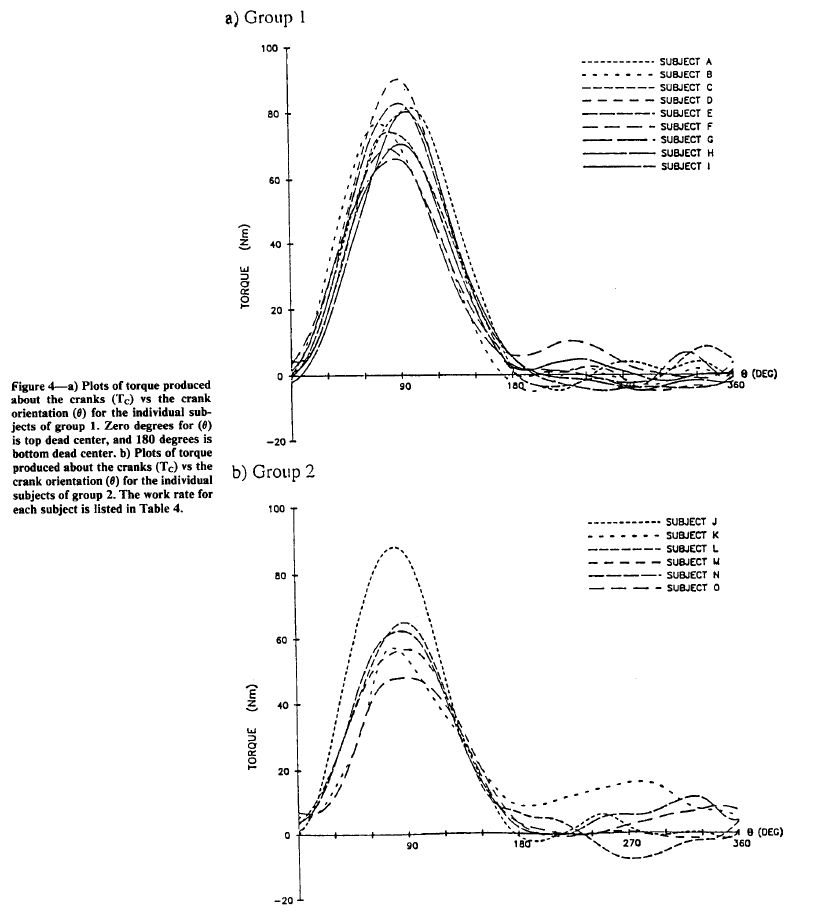Quadrant analysis question

Trev The Rev
Posts: 1,040
Does quadrant analysis take into account the force or forces applied throughout the whole pedal stroke? And can we use this data work out the contribution to total power of any scraping back, pulling up, pushing over the top makes to the total power generated or work on an average force over the whole stroke?
Does it merely show us the differences between high cadence low force and low cadence high force etc and does not in effect have any idea which parts of the stroke generate which percentage of the total force?
Does it merely show us the differences between high cadence low force and low cadence high force etc and does not in effect have any idea which parts of the stroke generate which percentage of the total force?
0
Comments
-
QA (in WKO) shows circumferential pedal velocity vs average effective pedal force.
CPV = C*CL*2*Pi/60, so basically cadence x a constant. (CL is crank length)
AEPF = (P*60)/(C*2*Pi*CL), so basically a ratio of power to cadence with some constants thrown in.
Neither takes in to account the change in force through the pedal stroke. I think you need a Watt bike to do that, if you think it's a worthwhile exercise.......
http://support.trainingpeaks.com/traini ... lysis.aspx0 -
Quadrant analysis shows you whatever two values you are comparing, in the case of pedal force and pedal speed data from most power meters, then what it plots is average effective pedal force (for complete revolution) and circumferential pedal speed (average for complete revolution).Trev The Rev wrote:Does quadrant analysis take into account the force or forces applied throughout the whole pedal stroke? And can we use this data work out the contribution to total power of any scraping back, pulling up, pushing over the top makes to the total power generated or work on an average force over the whole stroke?
Does it merely show us the differences between high cadence low force and low cadence high force etc and does not in effect have any idea which parts of the stroke generate which percentage of the total force?
To do more than that, you'll need the raw crank torque data which is not available on most power meters, with the exception of SRM with the addition of their torque analysis system which can provide the raw torque data stream at 200Hz. Even then, it is not measuring pedal speed within the pedal stroke. Most power meters assume that rotational velocity within a rotation does not vary (which is a reasonable assumption under most circumstances).
The sort of analysis you are asking about is what has been measured in biomechanics labs using lab built force measurement pedals, along the lines of the Coyle et al paper: 0
0 -
Thanks Alex.0

